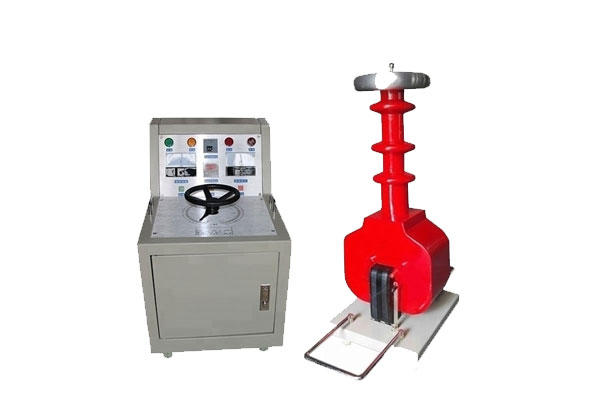When working with electrical safety test equipment, instruments that output potentially dangerous voltages and currents, it is always important to regular review and encourage safe testing techniques. This includes setting up a safe work area, properly training any test operators and establishing safe test procedures. Knowing and recognizing the potential safety hazards can go a long way in helping a manufacturer safeguard their work station. This white paper will serve as an overview of the best approach to safe guard a workstation. It can be used as a general guide to make sure that there is a safe work environment for everyone involved in testing.
Work Area
lt is important to understand that a hipot tester generates voltages and currents that can cause harmful or even fatal electric shock. When setting up a work area to test products it is important to configure the workstation in a manner that provides a safe test environment. This should be the first step in safeguarding your workstation.
Do not perform electrical safety tests at an Electro Static Discharge (ESD) workstation.The ESD workstation is designed to conduct electricity to dissipate an electro staticcharge. Most static control equipment is not designed to be used near voltages greater than 250 volts. Electrical safety test equipment is routinely performed at voltages ranging from 120 to 5000 volts. Keep in mind that the product safety testing workstation should be designed for personal safety and to isolate other personnel from a potential electric shock. To do so be sure to limit the testing area from employees who are not familiar with the test instruments or the safety precautions. An untrained employee should not be able to have free access to the testing area particularly when tests are being performed. Ideally the test instruments or the safety precautions. An untrained employee should not be able to have free access to the testing area particularly when tests are being performed.Ideally the test station would be completely isolated from the main activity and flow of employees. Due to the production line flow, this set up may be a little impractical formanu facturers. If you do have a workstation as part of a larger production line, then it is very important to mark the area off with rope and warning signs. It should be overtly clear that high voltage testing is being performed. Only properly trained test operators should be granted access to this area.This will prevent employees, who are unfamiliar with the shock hazards, from being exposed to high voltage testing.
An extremely important safeguard that should be installed into the test station is a main power shut off switch. This power switch should be located and prominently marked at the entrance of the test station providing a quick and easy way to shut off power to the test area. In the event of an emergency, it is important to act as quickly and safely as possible. The main power switch allows anyone to respond in a quick and safe manner.

Another aspect that is often overlooked is the layout of the workstation. Simply setting up the test equipment appropriately can provide additional safeguards to the test operator.
Dielectric Withstand test equipment must be connected to a good ground. The grounding system of dielectric withstand test equipment is essential in providing protection to the test operator.Under no circumstances should this ground be defeated. It is also important that the input receptacle to which the test equipment is connected is properly polar ized and the proper low resistance bonding to ground is in place.In addition to that the test bench should be of a non-conductive material. This will isolate the Device Under Test(DUT), which further reduces the risk of electrical shock.
Engineering and work practice control is another important factor to consider when setting up a proper test station. For instance the test equipment and the DUT should be positioned in the safest manner possible.The test operator should not have to reach over the DUT in order to start, stop or adjust the tester. This provides an opportunity to come in contact with a DUT that need not exist.The test equipment should be positioned in away that allows the test operator to conduct the test without turning, repositioning or even taking their eyes off the DUT.This allows the test operator to be aware of the test area at all times and reduces the risk of an operator accidentally touching the DUT while a test is in progress or not noticing a test clip that may have accidentally fallen off.
lt is recommended that if the DUT is small enough, an enclosure or guards can be constructed around the DUT. This enclosure can be fit with switches so that unless the enclosure is closed, and access to the DUT is restricted, the test equipment will not start.This is a very effective method in reducing shock hazards because it is impossible for someone to come in contact with the DUT while the test is in process.
In addition to being clearly marked for high voltage testing, the test area should be clean and uncluttered. Test leads and other test equipment should be properly stored away. If these pieces of equipment or any other items are left on the workstation, it may be unclear to the test operator or a passerby which piece of equipment is actually being used and which product is actually being tested.
